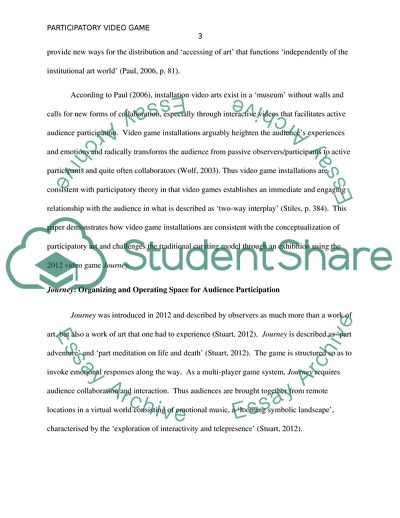Cite this document
(Participatory Video Game Installation in the Art World Coursework, n.d.)
Participatory Video Game Installation in the Art World Coursework. https://studentshare.org/visual-arts-film-studies/1818869-participatory-art-in-video-game-installation
Participatory Video Game Installation in the Art World Coursework. https://studentshare.org/visual-arts-film-studies/1818869-participatory-art-in-video-game-installation
(Participatory Video Game Installation in the Art World Coursework)
Participatory Video Game Installation in the Art World Coursework. https://studentshare.org/visual-arts-film-studies/1818869-participatory-art-in-video-game-installation.
Participatory Video Game Installation in the Art World Coursework. https://studentshare.org/visual-arts-film-studies/1818869-participatory-art-in-video-game-installation.
“Participatory Video Game Installation in the Art World Coursework”. https://studentshare.org/visual-arts-film-studies/1818869-participatory-art-in-video-game-installation.


